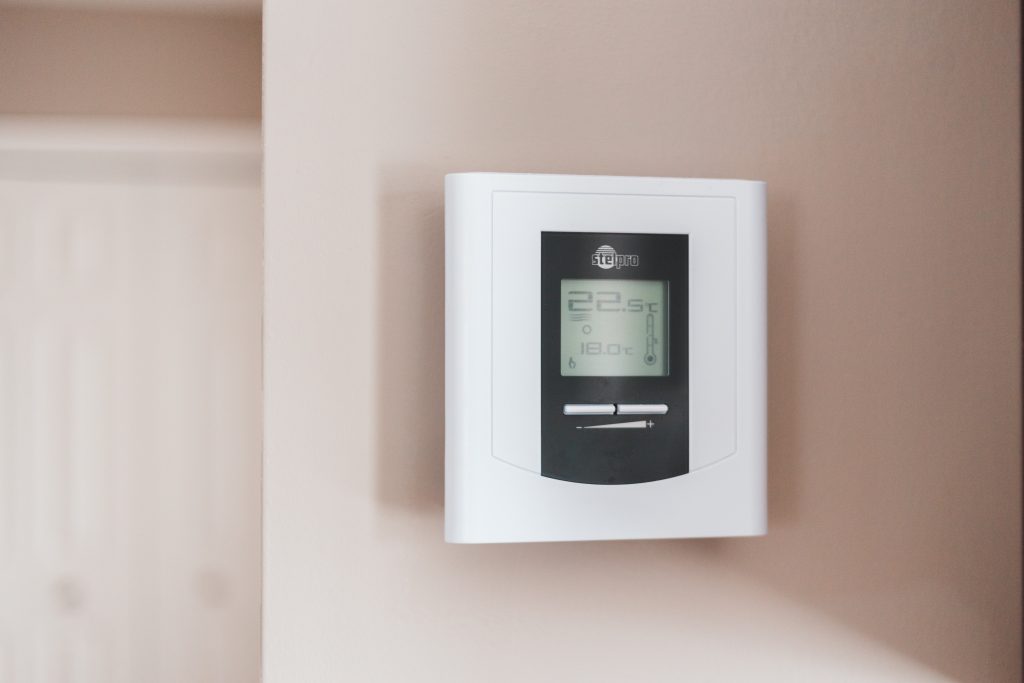9 Heating Problems Most Homeowners Experience and Ways to Fix Them Yourself
1. Cool air coming from the heating unit
Quick DIY fixes for heating units giving out cold air:
2. Faulty thermostat
Quick DIY fixes for a faulty thermostat:
3. Irregular heating around the home (some parts cold, others warm)
Quick DIY fixes for parts of the home not heating properly:
4. High heating bills
Quick DIY fixes for when your heating bills are too high:
5. Moldy furnace
Quick DIY fixes for a mold-infested furnace:
6. Carbon monoxide emission
Quick DIY fixes for carbon monoxide leakage:
7. Burning smell coming from the furnace
Quick DIY fixes for a furnace with a burning smell:
8. Problematic furnace ignition
A quick DIY fix for a heating system that’s difficult to turn on:
9. Noisy HVAC unit, boiler, furnace, or heat pump
Quick DIY fixes for noisy heating equipment and appliances:
And If All Don’t Seem to Work, Call a Heating Technician in Missoula, MT
Are you experiencing breakdowns or issues with your heating system?
That’s perfectly normal. After a long period of summer idleness, heating equipment may wake up in winter with problems.
Or maybe it’s a different scenario for you.
Whatever the case may be, there are DIY solutions you can use to fix them quickly and get back to enjoying the warmth.
Not only will you save costs of repairs by handling these minor faults yourself, but handling them in time will also prolong the life of your heating system.
Let’s get to it…
9 Heating Problems Most Homeowners Experience and Ways to Fix Them Yourself
Whether your water heater is making weird noises or your furnace isn’t hot enough to warm up your home, these easy fixes can save you a ton of money.
1. Cool air coming from the heating unit
One of the most common heating problems is the furnace giving off cool air instead of warm air. Regardless of the type of HVAC system, heat is supposed to be dispersed during the cold months. Your heating system might have an issue with air filters or thermostats. Sometimes, leaking ducts can be the reason the temperature is off.
Quick DIY fixes for heating units giving out cold air:
Assuming nothing more complex is going on with your furnace, these DIY fixes should get everything back on track:
- Check the thermostat setting if it’s at the correct temperature. Also, make sure ‘auto mode’ is set and ‘fan on’ is not set because it will blow cool air when the fan is on.
- Air filters get clogged and blocked due to dirt, debris, and other particles. You might not have replaced them in three to six months. A replacement should fix the problem.
- Sometimes, if your system hasn’t had enough gas pressure, low electric current, or oil, it won’t work efficiently. Therefore, make sure that your system has enough fuel to run properly.
- You might have a leaky duct causing all the problems behind the scenes. You can find out for sure by turning the fan on and visiting the attic or crawl space. Inspect the whole duct with the back of your palm, feeling for any air leakage.
If these fixes don’t work, it’s time to call a professional to help fix the issues in your heating system.
2. Faulty thermostat
It is one of the most common heating problems homeowners have to bear — the thermostat is not working or the controls stopped functioning. In either case, it’s hard to control the room temperature during the cold months. Sometimes, the system won’t turn off or set the heating mode on its own.
Quick DIY fixes for a faulty thermostat:
Here are troubleshooting options to try:
- The thermostat wires might not be connected properly; the first fix is to double-check the wiring and connections
- It’s also a good idea to check the thermostat batteries if it’s not working at all; drained batteries won’t let the digital thermostat come on
- If everything seems alright, but it’s still not working, reset the thermostat settings and see how it works; If nothing happens, your thermostat might need professional care or replacement
3. Irregular heating around the home (some parts cold, others warm)
Again, a common heating issue many homeowners face is parts of the home not heating properly.
If you have a large enough heating system, it’s most likely an internal problem.
On the other hand, this problem may arise because you installed a less powerful heating system to meet your needs. That way, the warmth doesn’t spread to every corner of the house. But of course, if the system had been working fine in the past, there must be a problem internally.
Quick DIY fixes for parts of the home not heating properly:
- Dirty air filters can be one culprit in this case as well, so check if the air filters need cleaning or replacement
- There may be a problem with the heat pump’s fan, bearings, or belt; try lubricating the moving parts to improve efficiency
- Also, check the ductwork to see if a leakage prevents your home from getting the warmth it’s supposed to receive
- If you find out that your newly installed heating system is not enough to warm up your entire living space, you can try out solar heaters or room heaters in areas without heat
If the quick fixes don’t solve the problem, consider looking for professional HVAC care to identify and fix what’s preventing your system from optimum performance.
4. High heating bills
If your heating bills are high for unknown reasons, it can be a sign that your system might have some underlying problems leading to inefficiency and high costs. It could be a result of a minor problem that you can fix yourself or a major complication requiring professional help.
Quick DIY fixes for when your heating bills are too high:
- If you’re using heat pumps to warm up your house, dirty air filters or tripping of breakers can be the reason energy bills are high
- Sometimes, a leaked refrigerant or compressor damage can also be the problem and you’ll need a trained heating technician for it
If you’re unable to find any obvious reason for your rising energy bills, it’s better to seek professional help to perform a detailed inspection of your system.
5. Moldy furnace
It might be a surprise to find out mold grew in your home heating system. It’s usually because of a high amount of moisture in the air.
If you’re living in an area where moisture in winters is a troublemaker, mold build-up is normal. Even in neighborhoods with drier winters, fogged windows and condensation can lead to moisture and mold build-up.
Quick DIY fixes for a mold-infested furnace:
- Of course, the first thing to do is clear the area where mold has grown
- If you’re using a humidifier to keep your home comfortable, check if the humidifier is the cause of the disturbing moisture levels
- Your exhaust fans and ventilation might not be working properly to exhaust indoor pollutants
- A more advanced solution to prevent mold growth in the future is calling professionals to insulate the ducts to avoid any moisture entering your heating system and polluting it
6. Carbon monoxide emission
If you have a gas furnace installed in your home, the combustion process emits a dangerous gas — carbon monoxide.
Carbon monoxide gas is not supposed to be emitted inside the home. This colorless and odorless gas is a silent killer, and you must install CO detectors to keep the check. If you notice that a carbon monoxide detector raises the alarm more than usual, that’s a serious problem.
Quick DIY fixes for carbon monoxide leakage:
- Check if the flue pipe is blocked or damaged; the flue pipe is supposed to ensure the safe exit of dangerous gasses out of a home and can back up the gasses inside the home if broken, blocked, or damaged
- Sometimes the wrong installation of a furnace can also be a reason the carbon monoxide detector rings often; you will have to call expert technicians to fix such complicated issues
7. Burning smell coming from the furnace
Since your furnace is mostly operational in the winter months, it stays idle during summer. You might experience a burning smell coming out of the system when it’s turned on for the first time in winter.
The smell is usually due to the burning of dust accumulated inside. However, if the smell doesn’t go away after a while, it can be because of a more complex issue.
Quick DIY fixes for a furnace with a burning smell:
- Dirty air filters might be the reason in this case as well; the first thing to do is unplug the furnace and clean the filters
- If the smell doesn’t go away, it might indicate a serious issue like wiring problems, damaged heating system, or overheated motor; in any of these cases, call expert technicians near you to take care of your system
8. Problematic furnace ignition
The ignition should work as soon as the furnace is turned on. It stays activated until the heater reaches the thermostat temperature. If the ignition system is not working properly, there’ll be no heat.
A quick DIY fix for a heating system that’s difficult to turn on:
If everything seems fine, but the furnace is not ignited, it’s time to get expert assistance. A damaged ignitor or incorrect installation, dirt, cracked, hot surface ignitor element, or out-of-service pilot light can be the reasons.
Here, the best you can do is call professional technicians to inspect and fix the problem.
9. Noisy HVAC unit, boiler, furnace, or heat pump
A gentle operating sound from your boilers, furnace, or heat pump is not a problem. When the noise turns into irregular or severe annoying noise, you should be concerned. The reason can be as simple as a loose panel or lack of lubrication.
However, sometimes, it might be telling you there’s a hidden problem that needs a technician to look into it.
Quick DIY fixes for noisy heating equipment and appliances:
- Check if your furnace or air handler cabinet’s panels are popped out or misplaced, resulting in irregular noise
- Check the motor bearings for lubricant because the grinding noise can result from friction; oiling is necessary to minimize the wearing of the bearings
- The fan belt inside the furnace might need to be replaced
- If nothing makes sense and the noise doesn’t go away, call a technician to help to fix the issue
And If All Don’t Seem to Work, Call a Heating Technician in Missoula, MT
You shouldn’t ignore any issue, small or major, in your heating system.
The insignificant problem today can lead to a colossal disaster in the future. Therefore, the best practice is regular maintenance of your HVAC system by professionals.
Second, always seek the help of professionals to fix complicated issues that are beyond DIY fixes.





